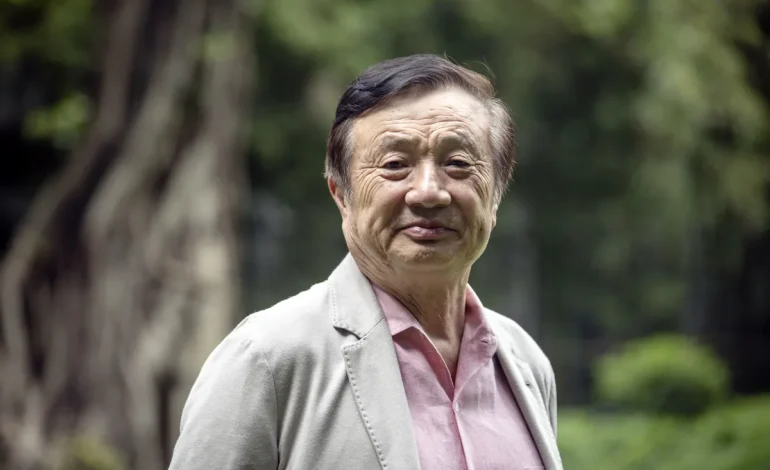Huawei Technologies’ founder Ren Zhengfei has sought to temper expectations about his company’s semiconductor capabilities, stating that the US has overstated Huawei’s technological advances.
His remarks came amid ongoing trade negotiations between Washington and Beijing, where export controls on critical technologies remain a central issue.
In an interview published Tuesday by China’s state-run People’s Daily, Ren acknowledged that Huawei’s Ascend artificial intelligence (AI) chip line, positioned as a key competitor to US chipmaker Nvidia within China, “lags behind the US by one generation.” He emphasized that Huawei is “not that strong yet,” countering recent concerns raised by Nvidia’s CEO Jensen Huang, who described Huawei as a “formidable” competitor benefiting from US restrictions on chip sales to China.
The interview coincided with a fresh round of US-China trade talks held in London, which included discussions on export controls. Earlier rounds had not addressed this issue, but Beijing’s recent curbs on rare earth minerals—essential for various manufacturing sectors—have made export restrictions a focal point in negotiations. These controls have affected the global supply chain and raised concerns among US, European, and Japanese industries.
US sanctions have blocked shipments of Nvidia chips to China, inadvertently accelerating Chinese companies’ adoption of Huawei’s Ascend chips. Despite this, the majority of Chinese AI firms still rely on Nvidia technology for training large language models (LLMs), reserving Huawei’s chips mainly for less demanding tasks such as generating AI chatbot responses. Technical challenges have been reported by both analysts and Huawei researchers regarding the use of Ascend chips in training LLMs, including issues with chip interoperability and workload distribution.
Ren addressed these concerns by highlighting Huawei’s advancements in cluster computing—a method that connects multiple chips to enhance AI server performance. He stated that “using clustering and stacking, our computing results are comparable to the world’s best.” The company’s CloudMatrix 384 AI server, which integrates 384 AI processors using Huawei’s proprietary optical technology, exemplifies this approach. Several customers are currently testing the server, working alongside Huawei engineers to overcome challenges related to heat dissipation and the physical weight of the equipment.
One industry insider noted that Huawei’s main obstacle remains building a developer ecosystem around its platform. Nvidia’s established software environment, Cuda, provides ease of use that Huawei is still striving to match.
Ren also highlighted Huawei’s significant investment in research and development, reportedly spending approximately 180 billion yuan (about $25 billion) annually, with one-third dedicated to basic research aimed at breakthroughs beyond immediate product development. He expressed confidence in China’s broader technological infrastructure, pointing to the country’s “world-class” power generation, grid systems, and advanced telecommunications networks as advantages in AI development.
The Huawei founder dismissed fears that US export restrictions would severely hinder China’s progress in semiconductors, suggesting that techniques such as chip packaging and stacking could compensate for limitations in chip manufacturing technology. Ren also expressed optimism about China’s potential for innovation in AI and software, particularly as open-source initiatives gain momentum.
Huawei has evolved significantly in recent years, transitioning from primarily a telecom equipment and smartphone maker to a major player in semiconductors, electric vehicles, and AI software. The company remains a focal point in US trade policy due to its perceived connections to Beijing and concerns over national security.
Since being added to the US Entity List in 2019, which restricts access to American technology, Huawei has faced significant operational challenges. However, it has managed to regain market share in smartphones and is making inroads into AI and EV markets despite ongoing sanctions.
With input from Reuters, the Financial Times, and Bloomberg.










The latest news in your social feeds
Subscribe to our social media platforms to stay tuned